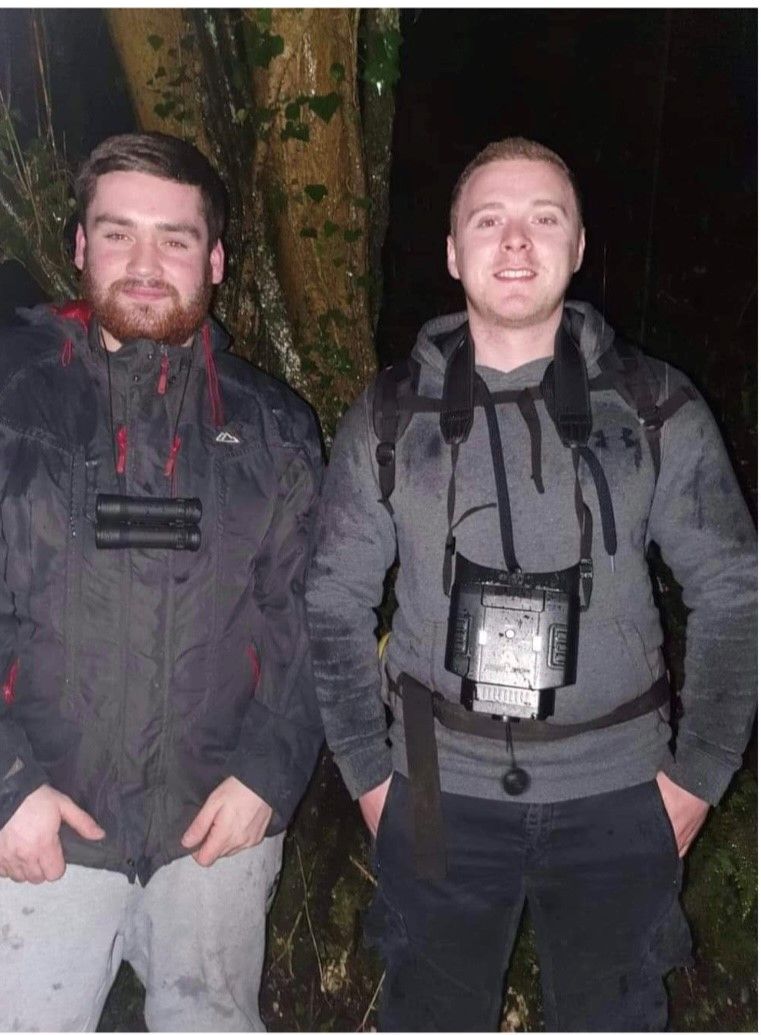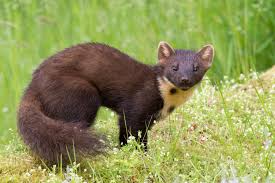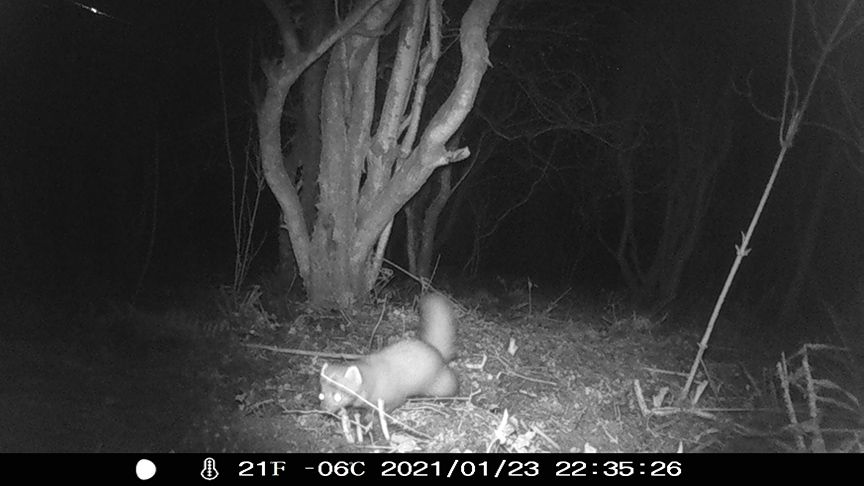AN amazing discovery has been made on the Belfast hills – thanks to student Aaron Kelly undertaking a course project like no other.
This grainy picture is of an elusive pine marten in a mystery spot above West Belfast – the first time it has been found on our hills. Most of us don’t know this native Irish mammal even exists.
When the forests that covered our land were axed, this once-common ferret-like animal was feared to have become extinct. It made a near-terminal retreat to a few remote patches of thick cover in the wildest west.
But Aaron (23) – who from a young age has been enchanted by the hills that sweep above his Ballymurphy home – always kept an eye out for any sign of the pine marten every time he went into the country.
And late last year his heart skipped a beat when he discovered what would eventually lead him on a journey which would culminate in this incredible photographic evidence. Aaron knew pine martens marked their territory by leaving ‘scats’ – droppings. And he knew the tell-tale sign that marks the 'scat' out from the droppings of other animals – it actually smells of flowers! “I found some which was tapered at the end and contained seeds. But it actually smelt of Parma Violet sweets – so I knew I was on to something!” he told Dúlra this week.
INSEPARABLE: Aaron Kelly (right) and Conor Smyth
It was enough to set him on a mission to get proof of the pine marten’s return that would be irrefutable – a photograph. And along with his course tutors at Belfast Met where he’s studying animal management, he undertook a practical year-long project – to find a pine marten on the Belfast hills. Projects like this are often marked on research, structure, theory – you’re not expected to actually discover the holy grail. But Aaron exceeded all expectations, making natural history in the process.
The ‘scat’ was just the start. Aaron and his friend Conor Smyth from Turf Lodge decided to go onto the hills at the times the pine marten is active – the hours of darkness. Night after night since before Christmas they spent six hours at a time under camouflage on the freezing mountainside using night vision binoculars in the hope of coming face-to-face with the cute mammal.
“We usually stayed up from 10 at night to four in the morning four or five days a week – and we always got the landowners’ permission,” Aaron said. “We set up camera traps too which would take a picture of any movement. I’d check those first thing and when I actually saw the picture of the pine marten I couldn’t believe it. We’d been looking for it for months and here it was in front of me.
“I was screaming with joy on the mountain and you probably could have heard me back in the city!”
Now they knew where the animal was, they were able to hide out nearby – and it didn’t take long for the pine martens to appear right in front of them.

“It’s best around dawn. One bolted right up past us in the field – they’re a joy to see,” Aaron said.
Conor (23) said that his interest in the Belfast hills was sparked by taking part in a mountain clean organised by Aaron. “It’s unbelievable the amount of wildlife up there. I had no idea how much until I started looking for the pine martens,” he said.
“We saw owls and foxes and badgers and all on our own doorstep. It’s a sight to savour – I love the mountain and the wildlife on it.”
Pine martens like trees – as their Irish name, cat crainn, cat of the tree, suggests. And it’s hoped that they’ll be able to help another rare Irish native mammal – the red squirrel. For although they’ll happily eat a red squirrel, they’re more likely to catch the foreign, more tame grey squirrel – which has replaced the shier red.
The reds co-evolved with pine martens for thousands of years in Ireland, learning how to escape them. The American grey squirrel, which spends more time on the ground, makes easy prey. Wouldn’t it be great if we could have not only pine martens on our hills, but red squirrels as well?
When Dúlra was young the pine marten was an animal of the most remote Scottish glens. In England they were extinct for a century until one was photographed in 2015. A growth of population in Scotland has led to some being trapped and released in Wales, where it was missing for generations.
That it has returned to its old haunts on the Belfast hills after centuries is something to celebrate.
It’s hard to believe that the sweet-smelling droppings that Aaron found last September led him on a journey – and a college project – that would discover that our rarest wild animal was actually living on the hills above Belfast. Dúlra thinks he might pass!
• If you’ve seen or photographed anything interesting or have any nature questions, you can text Dúlra on 07801 414804.








